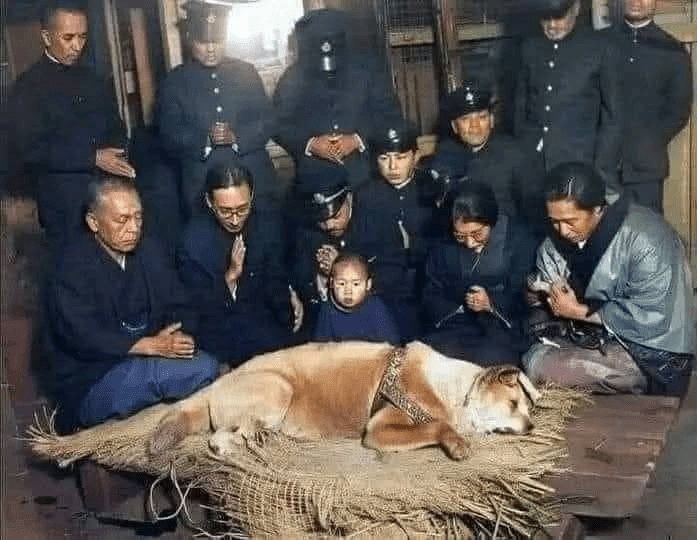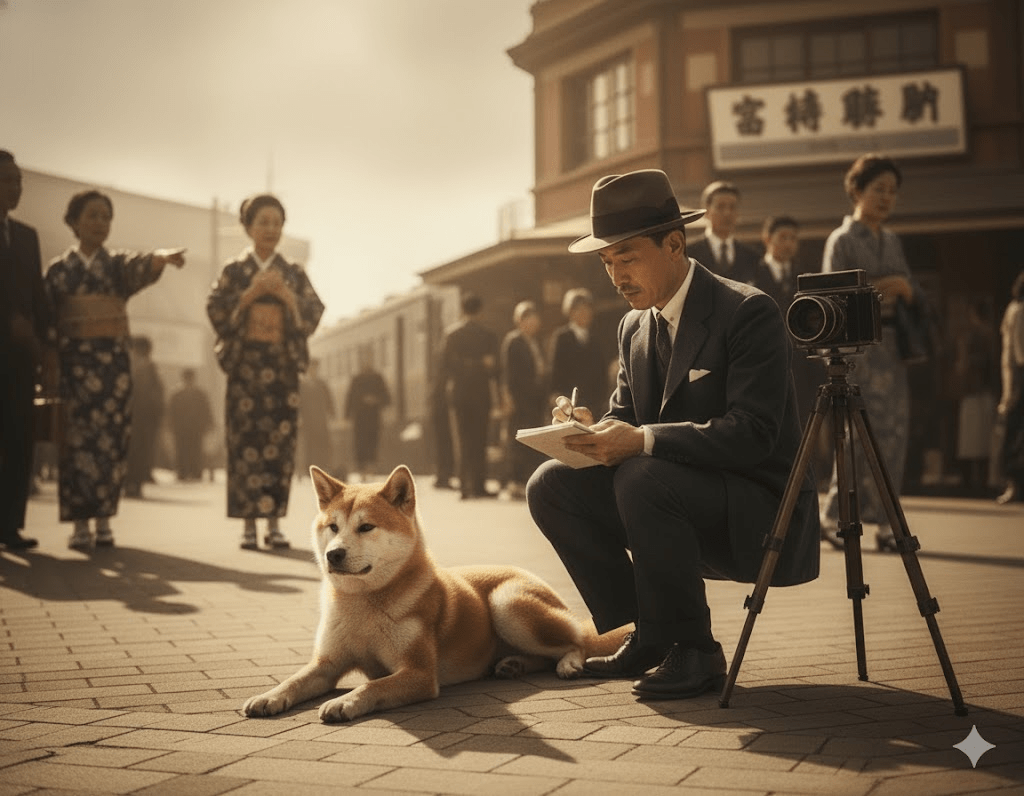The air hung heavy with a palpable sorrow, a stillness that belied the bustling metropolis just beyond the wooden walls. In a quiet corner of Shibuya, a profound drama unfolded, a final act in a story that had captivated a nation for nearly a decade. This wasn’t a scene of human tragedy in the conventional sense, but the poignant farewell to a creature whose unwavering devotion had transcended the ordinary and etched itself into the very soul of Japan. Gathered around a humble mat, figures in solemn attire, some in uniforms of authority, others in traditional dress, bowed their heads. Their faces, etched with a mixture of grief and reverence, reflected the collective heart of a country bidding adieu to its most faithful son. At the center of this somber tableau lay Hachiko, the Akita whose story of loyalty had become a legend, now still and peaceful in his final rest, his long vigil finally over. It was March 8, 1935, and the silent grief in that room resonated far beyond its confines, echoing the tears of thousands who had come to know and love the stoic dog of Shibuya Station.

Hachiko’s journey began like any other, a typical Akita puppy brought into the loving home of Professor Hidesaburo Ueno of the Imperial University. Their bond was instant and profound. Each morning, Hachiko would walk with the Professor to Shibuya Station, patiently waiting for his return in the evening. This daily ritual became a comforting sight for commuters, a small, warm constant in the hurried rhythm of city life. No one could have predicted the sudden, heartbreaking twist that would shatter this routine and forge a legend.
Then, on May 21, 1925, tragedy struck without warning. Professor Ueno suffered a cerebral hemorrhage while at the university and passed away. Hachiko, as always, waited at the station that evening, but his beloved master never emerged from the train. Days turned into weeks, weeks into months, and still, Hachiko appeared at the station at precisely the time the Professor’s train would have arrived. He was taken in by the Ueno family’s former gardener, Kikuzaburo Kobayashi, but his heart remained fixed on his master’s return. Despite attempts to keep him at home, Hachiko would regularly escape, driven by an inexplicable, powerful instinct to return to his vigil.

Initially, Hachiko was an anomaly, a stray dog lingering around the station. Some commuters grew annoyed, even hostile, shooing him away. The station staff, while often kind, also viewed him as a persistent nuisance. But among the throngs of commuters, one man, a former student of Professor Ueno named Hirokichi Saito, recognized the dog. Saito, an expert on the Akita breed, began to document Hachiko’s story, piecing together the incredible narrative of his daily vigil. His articles, published in a major newspaper, were the spark that ignited the public’s imagination.






